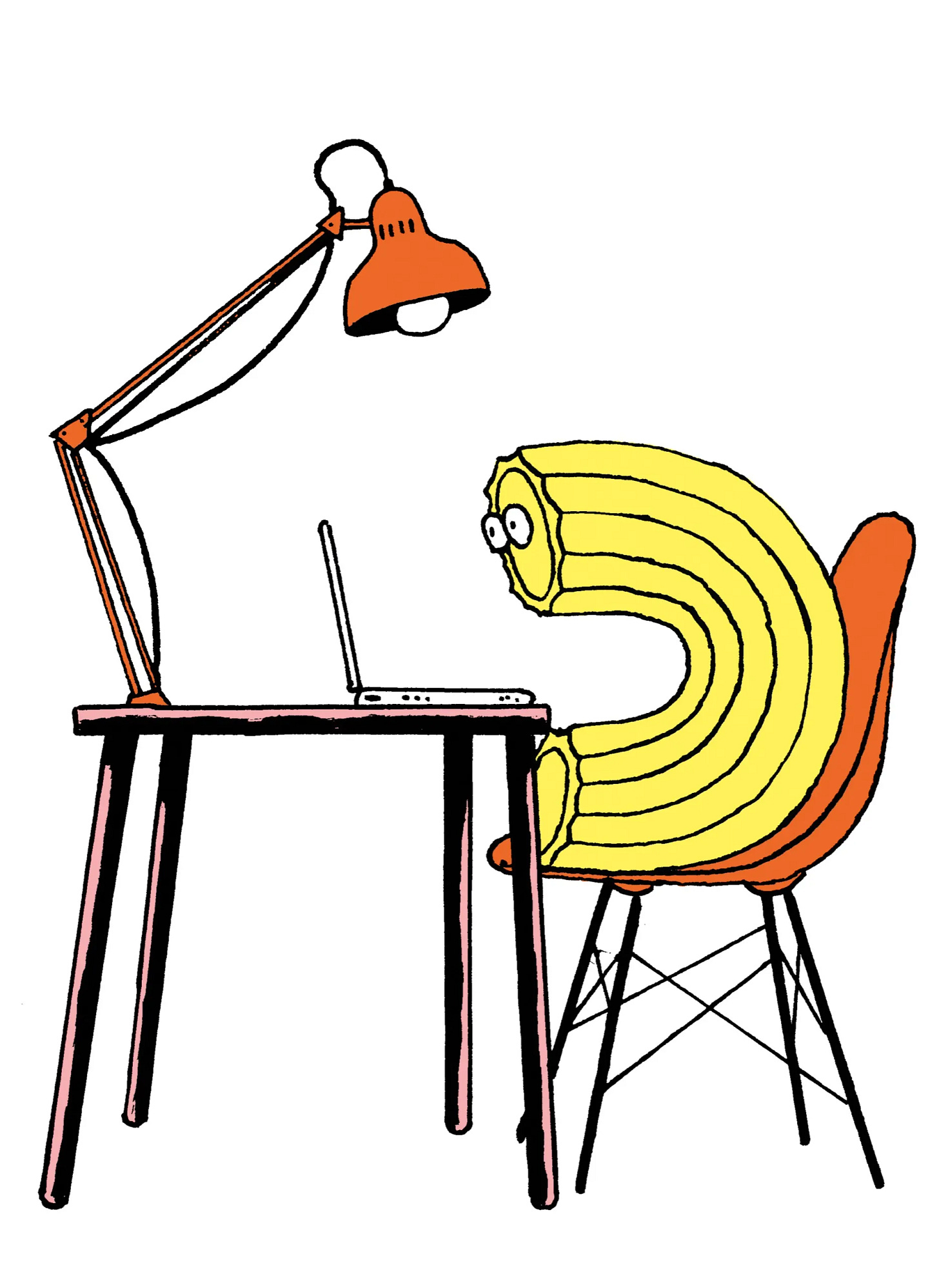Happy October! I am once again making a painting a day this month, following Peachtober prompts. This daily practice can tend to cramp up my hand and shoulder, so today I want to talk about how I prevent RSI, aka repetitive strain injury! Please note that I am not a health professional, just a person who’s spent a lot of time trying different tactics and seeing what works for me ✌️

Though I’ve never been diagnosed with RSI officially, I have had it from time to time in my right hand which can permanently be found in a curled up position. I tend to clench my hand even when I’m sleeping, and it takes conscious effort to unfold and relax it completely.
This is not just from drawing, but from years of death gripping my pencil or pen ever since I learned how to write and felt a compulsion to write my words out as fast as possible. Punch needling also hurts my hand even when using the ergonomic Oxford needle, which is why I don’t do it as often anymore. And of course I spend at least two hours a day on my phone, leading to “texting thumb” and “text neck”!
Here are my tips on how to help with hand, neck, and shoulder pain when making art:
Draw on an inclined / elevated surface. There’s a reason drafting tables are angled! But unless you’re a professional architect or cartoonist, you probably don’t need one of these—you can get a a tabletop easel instead. I got this easel over the summer and really enjoyed using it for my larger paintings. For sketching outside, I recommend propping up your sketchbook on your bag so you’re not hunched over while drawing. I even brought my easel to the park once to sketch and found I had the stamina to draw for much longer that day.
For iPad users, you can get a foldable case to prop up your tablet. There’s also this new Darkboard drawing surface on Kickstarter launched by the folks at Astropad. If I did more digital drawing, I would highly consider getting one.
Use a more free flowing pen. The difference in holding a ballpoint pen (even the Muji pen everyone loves) and fountain pen is huge! I love using fountain and brush pens now because I can relax my grip and work loosely. Some pens I love:
Work bigger. Last year’s Peachtober involved a lot of gripping tiny brushes to work on a 3x3” canvas. I still love working in tiny, but have been pushing myself to gradually work bigger which allows me to handle brushes with larger movements originating from my elbow and shoulder instead of my finger or wrist.
For the iPad pencil, get a soft pencil grip. This makes the pencil feel so much nicer and is definitely worth it if you are drawing for more than an hour at a time! Here is the one I use, but there are plenty all over the internet.
And some more for general pain and ergonomic tips:
Use a laptop stand, external keyboard, and mouse. Having your computer at eye level is so crucial, especially if you are using it all day for work!
Wear indoor slippers or shoes if your feet don’t touch the floor and you don’t work from a height adjustable chair. I am sure this tip sounds very silly to many of you but if you are of shorter height and don’t wear shoes in the house, you may be able to relate. My feet barely graze the floor with most dining chairs built for the average American man, so only with indoor shoes can I sit with proper posture. Otherwise I sit cross legged and hunch over the table, and my hips and back pay the price.
Use a massage ball. I have tried many self-massaging tools (foam roller, massage gun, even the S-shaped stick). These firm lacrosse balls are my latest obsession! They are really great for releasing tension in the hands (roll your palm against the ball on a surface), shoulder and back (use against the wall), and feet (use while stepping on the ball on the floor). They are also great to travel with.
Rest and exercise. The most obvious and crucial tip for last! If you don’t have a regular routine and are looking for ways to improve your posture and core, yoga and pilates are great places to start.
If you’d like to learn more about how to care for your body while drawing or making art, Draw Stronger by Kriota Willberg is a fantastic primer with various stretches, exercises, and other methods for preventing and relieving pain. I found the finger strengthening exercises in the book particularly great.
I hope today’s tips were helpful! Can’t relate to needing any of these advice? Please teach me your ways, I am very jealous. If you’d like to share how you manage or prevent pain while drawing or working, I’d love to hear them too. Any products you use or practices you follow? Let me know in the comments!





oo didn't know there were grips for the apple pencil! gonna get the same one 😬